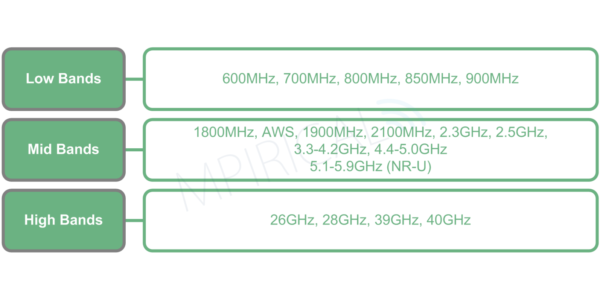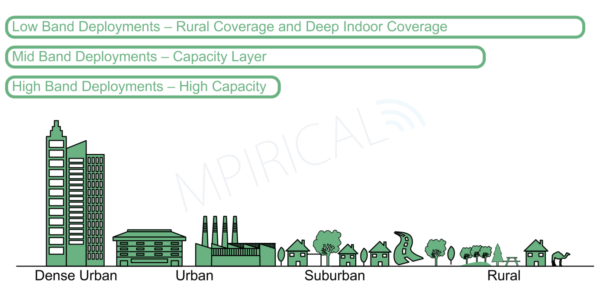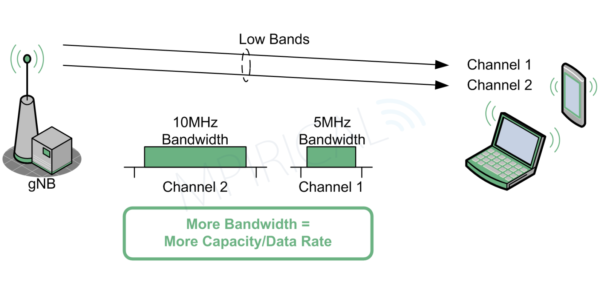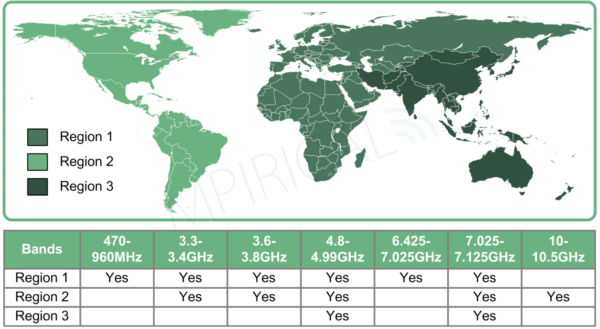
Improving the Digital Divide with 5G
Out of the 176 operators that have launched 5G services currently only 14 commercially support 5G SA (Standalone) operation. These Standalone 5G networks mainly utilize Mid Band frequencies, with the most common being deployed using the 3.5GHz band (Band n78). This is usually supplemented with additional frequencies that have been re-farmed from 4G or using features such as DSS (Dynamic Spectrum Sharing) to increase the 5G capacity. However, a few service providers have utilized the relatively new low frequency bands which were released as part of the Digital Dividend process (frequencies released due to analogue TV “switch off”). Whilst many have deployed LTE in these bands, a few have started to use them for Standalone 5G operation. These Low Bands not only offer great deep indoor penetration due to operating at a lower frequency, but they also can be used to improve the digital divide in many rural areas.
5G Deployment and Bands
Generally, the terminology used to describe the frequency bands for 5G are Low Band, Mid Band and High Band. Figure 1 illustrates some of the well-known bands.

The actual spectrum used by a Standalone 5G service provider varies based on their current spectrum allocation, as well as any refarming strategy from legacy technologies (2G, 3G and 4G).
In terms of Low Bands usage:
- 600MHz – Currently this is only available in ITU Regions 2 and 3 (See Figure 3).
- 700MHz – Typically utilized for 4G with some 5G deployments.
- 800MHz – Typically utilized for 4G deployments.
- 850/900MHz – Historical 2G bands. Some refarming for 3G, 4G and 5G developments.
Typically, most Standalone 5G service providers have chosen one or two key frequency bands to provide an umbrella of 5G coverage. This usually includes at least one Low Band channel (700MHz to 850MHz) if available, or in some cases it may be a Mid Band frequency. The issue with the latter is that it becomes costly to provide ubiquitous coverage especially to rural areas and deep indoor locations. As illustrated in Figure 2, a service provider will typically utilize a combination of frequency bands (and technologies), with Low Band being the more cost effective for rural deployments.
Unfortunately, the amount of Low Band spectrum available varies based on the country, as well as the service provider’s allocation.

Requirement for Additional Low Band Frequencies
Video streaming is a huge part of digital equality. On-demand streaming increases the bandwidth consumption, which at the Low Bands is limited. As streamed on-demand video increases there will naturally be a reduction in the number of people watching TV. As such, the valuable spectrum that is used to support a huge number of digital TV channels becomes unsustainable. It is this shift towards on-demand video which has triggered WRC-23 (World Radio Conference 2023) to re-evaluate, or at least discuss, the number of digital TV channels required. As illustrated in Figure 3, adding bandwidth from an additional Low Band channel, e.g. Channel 2, will increase the capacity / data rate at the required locations, i.e. Rural (as well as deep indoors). It is also worth noting that 5G provides better performance than 4G for the same amount of spectrum – hence it would be the preferred technology of choice.

As previously mentioned, Low Band is a scarce resource and therefore typically a service provider may only have a small amount of bandwidth, usually 5MHz or 10MHz, which when compared with the 40MHz+ of Mid Band spectrum they may have, highlights the limitation.
Figure 4 illustrates the bands that will be discussed as agenda items at WRC-23. One item that will be discussed is related to lower frequencies, including those below 700MHz (470-694MHz). These bands are typically utilized by other systems such as “digital TV” in various ITU Regions. It is worth noting that regions 2 and 3 already have access to some of these bands with a few North American providers utilizing 600MHz for 5G deployment. Note that the agenda is not all about Low Bands, with key discussions on many Mid Bands strategies.

Additional Limitations
Unfortunately, having these Low Bands “free” for 5G is only part of the process. Additional limitations for deployment relate to spectrum license, ongoing licensing costs, as well as the overall deployment costs. Unfortunately, some governments and regulators look at 5G spectrum as a revenue generation process, which sometimes causes a reduction in the amount of investment left for actual 5G deployment, which when related to the Digital Divide may limit the expansion into some rural areas.
Conclusion
Whilst improving the digital divide is a difficult (costly) problem, 5G and access to new Low Band frequencies helps in providing a cost effective mechanism to get greater capacity and data rates in rural locations. Unfortunately, even with the 5G Low Bands, service providers are conscious on the revenue/sustainability of rural sites, whether deploying 4G or 5G. As such, it typically falls on government initiatives or offsetting new Low Band license costs with incentives/requirements to cover the rural areas and reduce the digital divide.
If you would like to learn more about 5G, our expert instructors provide live classroom and on-demand Introduction to Fixed Wireless Access course.
